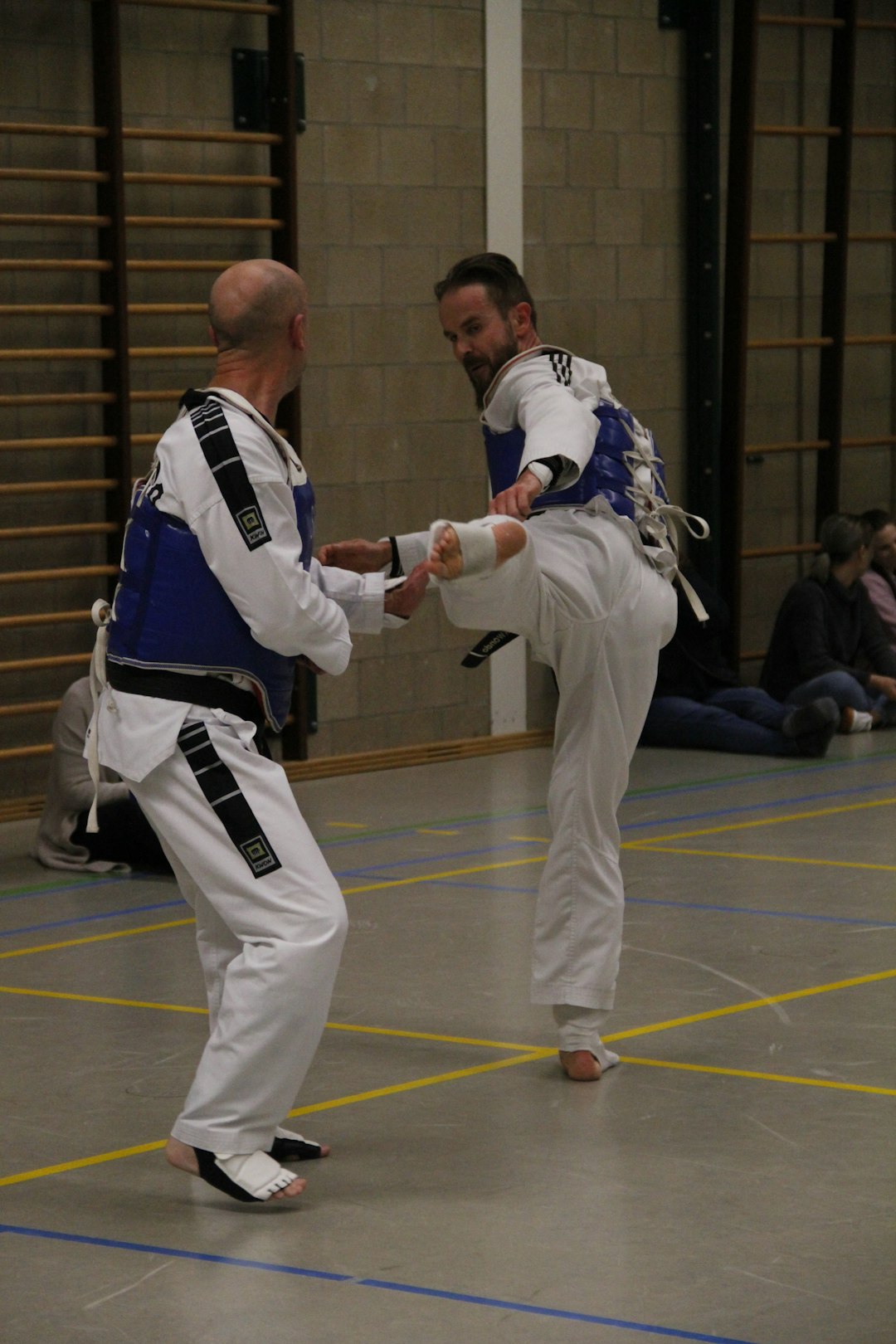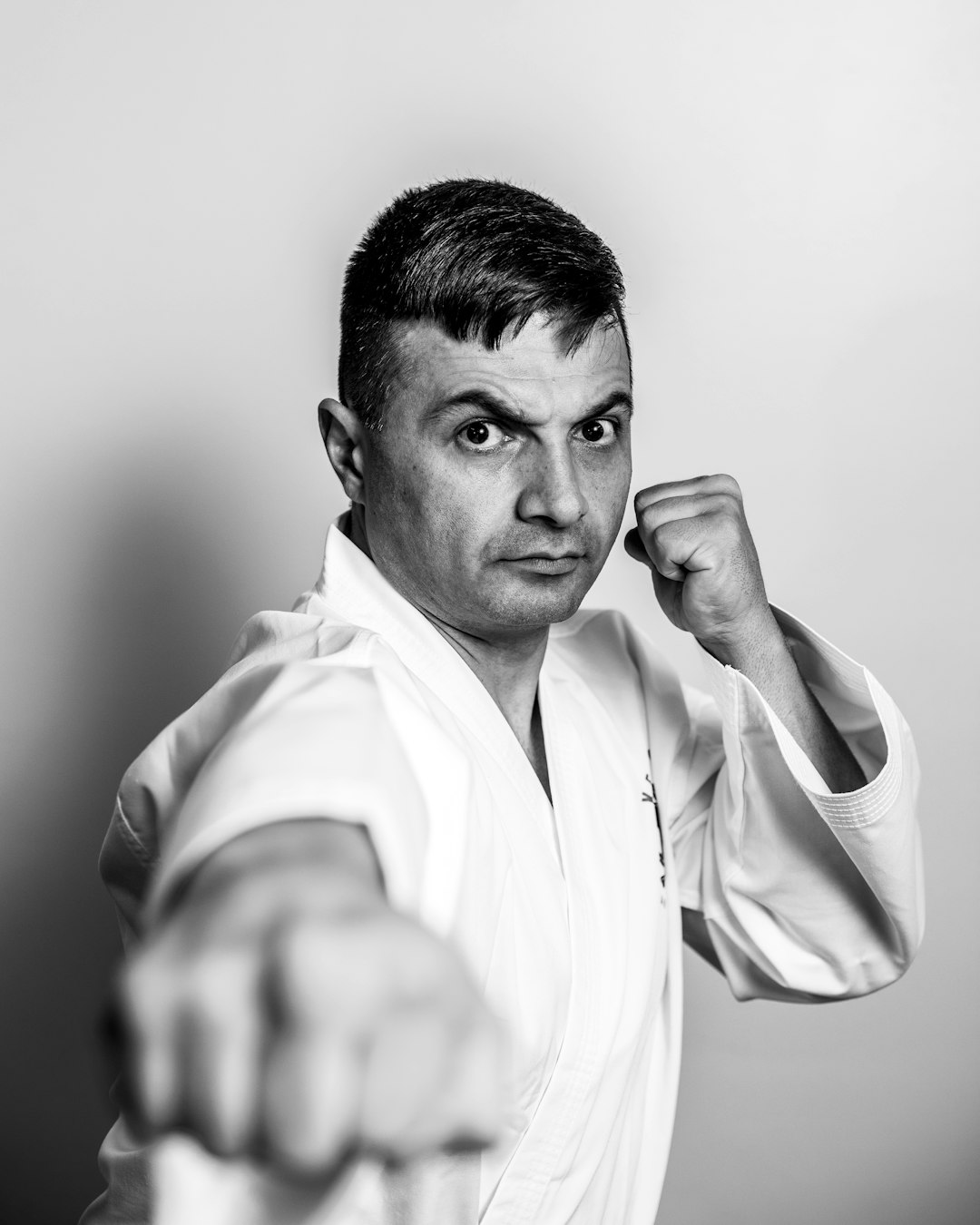When preparing for karate practice or competition, it's crucial to wear a well-fitting gi, the traditional martial arts uniform, typically made from durable materials like cotton or hemp, allowing for full range of motion and honoring the sport's traditions. The color of the gi should align with your dojo's customs and the specific style of karate you practice. Protective gear, including hand pads, foot pads, shin guards, and a mouthguard, is essential for sparring, providing safety during contact exercises. A properly tied belt not only signifies rank but also ensures focus on technique without distraction. For those engaging in full-contact sparring, additional protective equipment like helmets, groin guards, and specialized training gear such as focus mitts or kick shields are necessary to prevent injuries. Recovery tools like foam rollers or massage balls can aid in muscle health for sustained training and skill advancement. Opting for a karate outfit sanctioned by the World Karate Federation (WKF) ensures compliance with international standards, emphasizing both safety and adherence to the sport's disciplined nature.
Embarking on a journey in karate requires more than mere dedication; it demands the right gear to ensure safety, comfort, and optimal performance. This article serves as your compass, navigating through the essentials for both novice and seasoned practitioners alike. From the karate outfit called Gi to specialized sparring equipment, we’ll cover all you need to know to equip yourself for training. Dive into “Essential Gear for Karate Practice: The Definitive Guide to Your Karate Outfit and Beyond,” and advance your skills with our insights in “Mastering the Basics” and “Advanced Training Necessities.”
- Essential Gear for Karate Practice: The Definitive Guide to Your Karate Outfit and Beyond
- Mastering the Basics: Key Elements of a Proper Karate Gi and Accessories
- Advanced Training Necessities: Protective Gear, Sparring Equipment, and Supportive Tools for Serious Practitioners
Essential Gear for Karate Practice: The Definitive Guide to Your Karate Outfit and Beyond

When preparing for your karate practice, selecting the right gear is crucial to ensure safety, comfort, and performance during training. A key component of your karate outfit is the proper attire, known as a gi. Typically made of cotton or hemp, a gi should fit snugly yet allow for a full range of motion. Does the gi offer both durability and flexibility? It should withstand the rigors of practice while allowing you to move freely and execute techniques effectively. The traditional white gi is commonly worn, but depending on your dojo’s practices or the style of karate you are training in, other colors may be permissible. Are you aware of the specific requirements for your karate discipline regarding the gi’s color and design? It’s essential to adhere to these guidelines to maintain respect and tradition within the practice.
Beyond the gi, there are additional items that are equally important for comprehensive karate training. Protective gear such as hand pads, foot pads, shin guards, and a mouthguard play a vital role in safeguarding your body from injuries during contact exercises or sparring. Do you require protective equipment tailored to the intensity of your training sessions? The answer is affirmative, especially for sparring or any activity involving physical contact. Additionally, a well-fitting belt, which signifies rank in karate, must be included as part of your outfit. Remember, the belt should be tied securely to prevent it from slipping during practice. Are you equipped with the necessary protective gear and a correctly tied belt? These items ensure not only your safety but also your ability to fully engage in the art of karate without distraction or harm.
Mastering the Basics: Key Elements of a Proper Karate Gi and Accessories

When preparing for a karate practice or competition, selecting the appropriate outfit is crucial for both performance and respect for the traditional aspects of the martial art. A proper karate gi should be at the top of your list; it’s not just any karate outfit but a uniform that signifies discipline and respect within the dojo. The gi, a white cotton garment, typically consists of a jacket, pants, and a belt, known as an obi. It’s designed to allow for full range of motion without being overly restrictive, enabling you to execute techniques with ease. Is the gi made from high-quality, durable fabric that will hold up through rigorous training? Does it adhere to the traditional design while offering flexibility and comfort? These are the questions to consider when selecting your karate gi. A well-crafted gi, such as those sanctioned by the World Karate Federation (WKF), will meet these criteria and be recognized internationally.
In addition to the gi, essential accessories complete a karate practitioner’s kit. These include a pair of zori, traditional straw sandals that are worn to maintain cleanliness in the dojo, and a futo, a folding fan sometimes used as a training tool or for ceremonial purposes. Do you have a reliable brand of zori that offers both grip and comfort? Are the materials used in your futo durable and well-balanced for practice? These are the considerations that will ensure you are fully prepared for every aspect of karate training. Remember, the right accessories not only support your performance but also honor the traditional aspects of this martial art.
Advanced Training Necessities: Protective Gear, Sparring Equipment, and Supportive Tools for Serious Practitioners

When engaging in advanced karate training, it’s crucial to prioritize safety and performance. Serious practitioners must invest in a high-quality karate outfit called a gi, which is both durable and comfortable for rigorous practice sessions. The gi should be made of a suitable material that allows for ease of movement while withstanding the wear and tear of daily use. Additionally, protective gear is essential to safeguard against injuries during more intense training or when sparring. Padding for the hands, feet, forearms, and shins will protect vulnerable areas during impact strikes and kicks. For those who partake in full-contact sparring, a protective helmet and groin guard are also non-negotiable to prevent head injuries and other bodily harm. Sparring equipment such as focus mitts or kick shields for the trainer, as well as hand pads for the practitioner, are necessary tools for honing striking techniques effectively. Mouthguards are another important piece of gear to consider, especially during drills that involve high-impact strikes to the face. Finally, supportive tools like foam rollers or massage balls can aid in recovery and maintain muscle health, which is crucial for sustained training and progression in one’s karate abilities. Ensuring you have all these items not only enhances your safety but also your ability to train consistently at a high level, allowing for the best possible experience and growth as an advanced karate practitioner.
In wrapping up our exploration of what to bring for karate, it’s clear that a well-equipped karateka is essential for both safety and performance. Beginners should focus on acquiring a quality karate gi, which serves as the foundation of their karate outfit called, alongside the necessary accessories like a belt and protective gear. As practitioners advance, they must invest in specialized equipment tailored to sparring and advanced training needs. Remember to choose gear that aligns with the specific requirements of your dojo and the style of karate you practice. By following the guidance provided in ‘Essential Gear for Karate Practice,’ ‘Mastering the Basics: Key Elements of a Proper Karate Gi and Accessories,’ and ‘Advanced Training Necessities: Protective Gear, Sparring Equipment, and Supportive Tools for Serious Practitioners,’ you’ll be well-prepared to excel in your martial arts journey.
